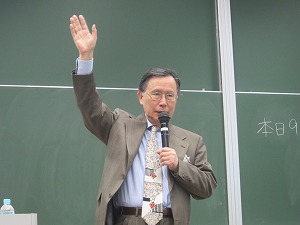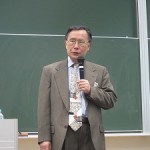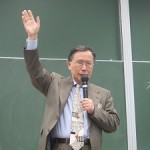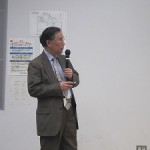On January 11, Professor Hasegawa delivered a lecture about regional diplomacy. First of all, he explained the birth and development of ASEAN, particularly AFTA, CEPT and EPA, and mentioned the extent of economic integration of ASEAN. He then pointed out the reasons why the process of regional integration has not proceeded as rapidly as in Europe. He explained that ASEAN moved forward with forming ASEAN plus One, ASEAN plus Three and East Asian Community, encompassing not only the economic but also the political, social and security cooperation of its member states as well as other countries of the region. The regional framework was expanded to include the United States and Russia in the forum of East Asian Summit. Finally, he made a comparison of Asian and European experiences and explained the reasons for the extent of integrations that has taken place in East Asia and Europe. (Yuka Hirakawa)
1月11日には、長谷川教授が地域外交について講義が行われました。まず、ASEANの設立への歴史や現在の動向についてご講義され、NAFTAやCEPT(共通効果特恵関税) などのASEANの関税に関するご説明、またASEANの経済的な連携についてもご説明されました。次に、経済連携協定(EPA)の仕組みや、なぜこれらの仕組みがあるにもかかわらず統合が進まないのか問題点を指摘され、これらの課題克服には何が必要なのか述べられました。次に、ASEANの役割は経済共同体としてだけでなく、政治・社会・安全保障の分野にまで多岐にわたり、多面的に共同体の統合が始まってきていることを指摘された。そして、ASEAN Plus One, ASEAN Three, TPP, APEC(FTAAP)の意義に関してご説明されました。また、地域社会とは何か、アメリカ、ロシアなどが加わった東アジア・サミットの地域共同体構成の様々な案を紹介されました。最後に、ヨーロッパにおける経済共同体から欧州連合までの成長過程の歴史と意義についてご説明されました。(平川裕果)





